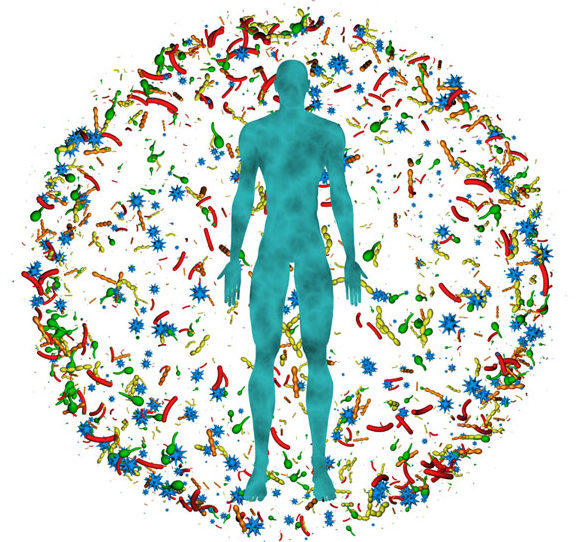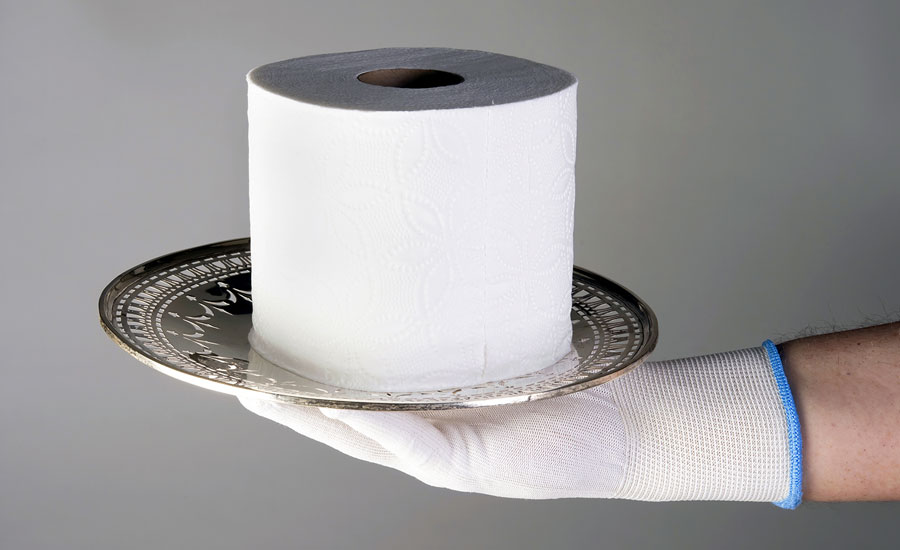Feces hold the key to understanding the effects of nutrition and microbiota on health and disease.
Feces metabolomics in short
Feces are a matrix of choice for research and diagnosis related to the gastrointestinal tract and microbiota for three main reasons:
- The collection process is non-invasive
- Sampling is possible regularly and in sufficient quantities
- Feces are a unique reflection of the individual’s lifestyle
Biological variance is probably the greatest challenge of feces metabolomics. This blog presents some of the strategies developed over the years to minimize these effects:
- Pooling from several topographical locations
- Managing water content
- Metadata and documentation
- Sample collection, processing, and storage
Biocrates has released an Application Note dedicated specifically to the measurement of feces samples using the MxP® Quant 500 kit, which includes protocols, biological variability tests and a thorough list of the metabolites detected in human feces.
Our blog below provides information on feces, their uses in medicine and research, and the technical aspects that should be considered when planning and conducting feces metabolomics.
The many faces of feces
Feces might not be the most appealing material to work with, but they have a lot to offer to diagnosis and research. They are a unique asset, not only to better understand many medical conditions, but also to decipher the role played by nutrition and the gut microbiota in health and disease.

Together with urine, feces contribute to the excretory function of the body, but their composition and origin are very different (Rose et al. 2015). Feces contain matter from food intake that was never absorbed in the body and remained in the gastrointestinal tract. Waste products from the circulation, such as the bilirubin from dead red blood cells that gives feces its characteristic color, are added to the mix during the progression of feces in the intestine. But what has been fascinating scientists lately is what feces have to tell about the contribution of the gut microbiota to human health.
Feces and gut microbiota
Feces are a unique biospecimen where interactions between intestinal microbiota and host are revealed. Sequencing of 16S ribosomal RNA in feces is now an accepted non-invasive method to assess the diversity of intestinal microbiota. Metabolomics, on the other hand, reveals the composition of feces that results from both microbial and host/human metabolisms, as well as diet.
Initiatives to develop functional microbiomics, such as the human microbiome project from NIH, that aim to analyze and make sense of our host-microbiota interactions and their effects on health are still early in development. However, they might lead the way to individualized diets as therapy and hold the promise of new avenues for individual diagnosis and treatments.
Feces metabolomics as a source of biomarkers
The fecal metabolome database was launched in 2018 and has since become a major source for information on the small molecule metabolites found in human fecal samples (Karu et al. 2018). Feces have become a biospecimen of choice in the search for biomarkers for disease states related to the gastrointestinal tract such as colorectal cancer (Erben et al. 2018), inflammatory bowel diseases (Franzosa et al. 2018) and many others.
With the discovery that intestinal microbial activity has an impact on brain activity (aka the gut-brain axis), feces have also been used to search for biomarkers of neurological conditions such as cognitive impairments (Ticinesi et al. 2019) and depression (Yu et al. 2017).
Technical considerations
Targeted metabolomics enables the study a broad spectrum of metabolites related to nutrition and microbiota research in various biological matrices, including feces. For instance, over 300 metabolites can be detected in human feces using the MxP® Quant 500 kit. However, before reaching these results, a lot of care must be given to the planning of an experiment and the handling of feces samples, as biological variance is probably the greatest challenge of feces metabolomics. Below are some tips on how to minimize these effects.
Pooling from several topographical locations
Unlike urine, or plasma, feces don’t come as one homogeneous sample. A stool sample typically contains different regions, or topographical locations, that can greatly vary in metabolite composition. These samples are also often too large to be easily handled in full for homogenization and metabolite extraction. One strategy to tackle this problem is to collect and pool several fractions from different topographical locations into a final sample that is then processed for metabolite extraction. The idea here is to objectively collect from various areas and requires consistent execution to reduce variability.
Managing water content
Human feces contain 75% water on average, but this number varies depending on diet, fiber intake and hydration (Rose et al. 2015). As a result, metabolite concentrations can vary greatly for any given individual between days or even within a given day. The two main techniques used to minimize variability from water content both consist in separating water and solid matter in stool samples. In one case, the aqueous phase of feces (commonly called fecal water) is further processed for metabolomics analysis. This, of course, means that the metabolites left in the solid phase are not analyzed. Another technique consists in removing all water by lyophilization and analyzing the metabolites left in the solid fraction. Like all sample processing steps, lyophilization also has an impact on the levels of certain metabolites.
However, comparing the metabolites detected in fecal water and lyophilized feces, Phua et al. showed that the lyophilized samples contained a broader range of metabolite classes. For instance, Biocrates’ kit focused on nutrition and microbiota metabolism allows the quantification of metabolites from many small molecule classes (alkaloids, amino acids, amino acid related, bile acids, biogenic amines, carboxylic acids, cresols, fatty acids, hormones & related, indoles & derivatives, nucleobases & related, vitamins & cofactors) as well as many classes of lipids (acylcarnitines, cholesteryl esters, (lyso)-phosphatidylcholines, sphingomyelins, ceramides & related, diglycerides, triglycerides).
Metadata and documentation
In a metabolomics project, the hypothesis dictates which variables should be strictly controlled and which ones can be given more freedom. For instance, for a project focusing on the effect of a new diet, food intake is tightly controlled. Meanwhile, for a project studying the effect of a new drug, varied diets might be desired in order to better represent the population that would eventually receive the drug. Although not all possible variables can be accounted for, much can be documented as metadata and used later during analysis to test for confounders; e.g. time of bowel movement, time between collection and metabolite extraction, diet, allergies, fiber intake, medication, sleeping patterns, geographic location, etc. All these can be helpful to better understand the results.
Sample collection, processing and storage
It is advisable to carefully plan a feces metabolomics project and perform a test study on a few samples first. If possible, protocols should be compared, and the performance of the collection and sample processing lines should be tested. Once this is optimized, it is recommended to consistently adhere to the protocol that best suits the project.
Most of the rules that apply to the collection and handling of biological materials apply to feces. Below are some of the more important points to keep in mind:
- Handle samples promptly: in order to limit sample degradation, keep samples at 4°C and freeze at -80°C as quickly as possible (after lyophilization, if applicable).
- Remember your sample is partly alive: this is another reason to quickly freeze samples. Warmer conditions promote the growth of the living microbiota in the sample and introduce bias for sequencing and metabolomics.
- Plan experiments thoroughly: factors such as the time of day, the patient’s/lab animal fasting status and diet can strongly influence metabolism and what will be measured in the samples
- Prepare pooled samples: collect sample fractions from several topographical locations in one stool sample to create a representative pool for further processing
- Consider lyophilization: for use with our targeted metabolomics kits, we recommend removing water by lyophilization to reduce the biological variability introduced by different water contents.
To prepare feces samples for targeted metabolomics, Biocrates recommends using an ethanol/phosphate buffer to extract the metabolites from lyophilized samples pooled from several topographical locations, followed by sonication and two centrifugation steps. The detailed procedure, as well as tests on biological and technical variance for metabolite quantification in fecal samples, are available in our Application note.
For more references and recommendations on how to collect and prepare feces samples for metabolomics, see the publications by Karu et al., Wang et al., and Smirnov et al., or contact us.
To take a deeper look at functional microbiomics, check out our webinar on “Metabolomics between Nutrition, Microbiome and Disease” .
Refer to our literature section for new points of view on the use of metabolomics for nutrition and microbiome research.
Links
Application Note on feces metabolomics
Targeted metabolomics kit for nutrition and microbiota research
Webinar on functional microbiomics
Related products
References
Erben, Vanessa; Bhardwaj, Megha; Schrotz-King, Petra; Brenner, Hermann (2018): Metabolomics Biomarkers for Detection of Colorectal Neoplasms: A Systematic Review. In Cancers 10 (8). DOI: 10.3390/cancers10080246.
Franzosa, Eric A.; Sirota-Madi, Alexandra; Avila-Pacheco, Julian; Fornelos, Nadine; Haiser, Henry J.; Reinker, Stefan et al. (2018): Gut microbiome structure and metabolic activity in inflammatory bowel disease. In Nature microbiology 4 (2), pp. 293–305. DOI: 10.1038/s41564-018-0306-4.
Karu, Naama; Deng, Lu; Slae, Mordechai; Guo, An Chi; Sajed, Tanvir; Huynh, Hien et al. (2018): A review on human fecal metabolomics: Methods, applications and the human fecal metabolome database. In Analytica chimica acta 1030, pp. 1–24. DOI: 10.1016/j.aca.2018.05.031.
Phua, Lee Cheng; Koh, Poh Koon; Cheah, Peh Yean; Ho, Han Kiat; Chan, Eric Chun Yong (2013): Global gas chromatography/time-of-flight mass spectrometry (GC/TOFMS)-based metabonomic profiling of lyophilized human feces. In Journal of chromatography. B, Analytical technologies in the biomedical and life sciences 937, pp. 103–113. DOI: 10.1016/j.jchromb.2013.08.025.
Rose, C.; Parker, A.; Jefferson, B.; Cartmell, E. (2015): The Characterization of Feces and Urine: A Review of the Literature to Inform Advanced Treatment Technology. In Critical reviews in environmental science and technology 45 (17), pp. 1827–1879. DOI: 10.1080/10643389.2014.1000761.
Smirnov, Kirill S.; Maier, Tanja V.; Walker, Alesia; Heinzmann, Silke S.; Forcisi, Sara; Martinez, Inés et al. (2016): Challenges of metabolomics in human gut microbiota research. In International journal of medical microbiology : IJMM 306 (5), pp. 266–279. DOI: 10.1016/j.ijmm.2016.03.006 .
Ticinesi, Andrea; Nouvenne, Antonio; Tana, Claudio; Prati, Beatrice; Meschi, Tiziana (2019): Gut Microbiota and Microbiota-Related Metabolites as Possible Biomarkers of Cognitive Aging. In Advances in experimental medicine and biology 1178, pp. 129–154. DOI: 10.1007/978-3-030-25650-0_8.
Wang, Zheng; Zolnik, Christine P.; Qiu, Yunping; Usyk, Mykhaylo; Wang, Tao; Strickler, Howard D. et al. (2018): Comparison of Fecal Collection Methods for Microbiome and Metabolomics Studies. In Frontiers in cellular and infection microbiology 8, p. 301. DOI: 10.3389/fcimb.2018.00301.
Yu, Meng; Jia, Hongmei; Zhou, Chao; Yang, Yong; Zhao, Yang; Yang, Maohua; Zou, Zhongmei (2017): Variations in gut microbiota and fecal metabolic phenotype associated with depression by 16S rRNA gene sequencing and LC/MS-based metabolomics. In Journal of pharmaceutical and biomedical analysis 138, pp. 231–239. DOI: 10.1016/j.jpba.2017.02.008.

